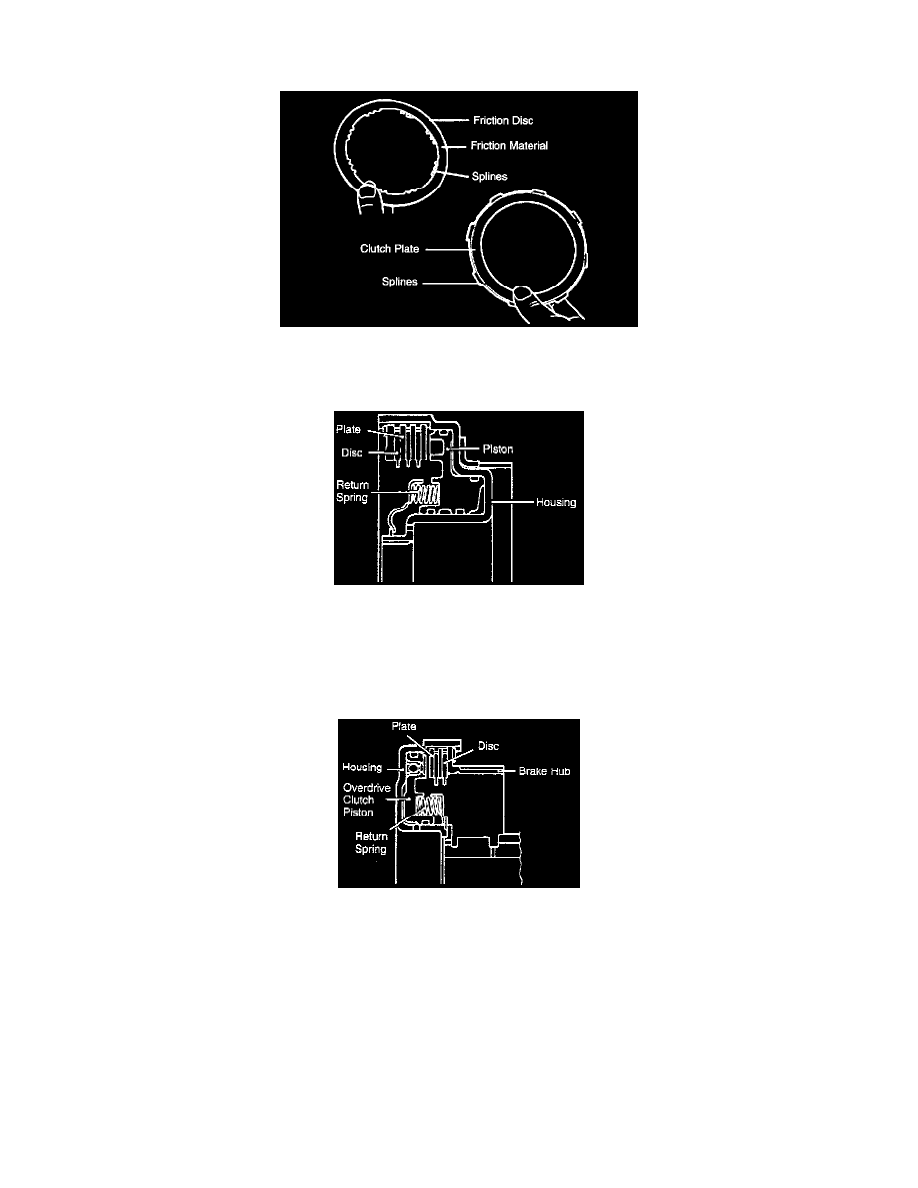Sportage 2WD 4Dr L4-2.0L (2000)

Clutch: Description and Operation
DISCS AND PLATES
Most of the clutches used in this transmission include clutch plates and friction discs. Clutch plates are made of steel, machined smooth on both sides
and usually have splines on their outer circumference. Friction discs are thin metal plates with friction material glued on both sides. The splines on
friction discs are usually on the inner circumference.
Friction discs and clutch plates alternate in a clutch housing. With the piston released, the friction discs rotate freely in the housing and ride on a thin
layer of fluid between the plates. When the piston is applied, the plates and discs are pressed together. The fluid is squeezed out from between them.
Excess fluid trapped between the discs and plates is thrown outward by centrifugal force into channels or holes in the housing and drains back to the
oil pan.
OVERDRIVE CLUTCH
The overdrive clutch is applied in all gears except overdrive.
Pressure is applied to the overdrive clutch through the oil pump reaction shaft support. The piston is located in the bottom of the overdrive clutch
housing and held in position by the return spring and snap ring. Fluid entering below the piston is retained by neoprene (rubber) O-rings located inside
and outside the piston. Pressurized fluid forces the piston to move against the return springs. As the piston moves, it compresses the discs and plates to
engage the clutch. The coil (return) springs provide no mechanical advantage.
The overdrive clutch houses the overdrive sun gear. The overdrive clutch discs are splined to the overdrive planetary carrier, while the plates are
splined to the overdrive clutch housing. The overdrive brake hub is held to the overdrive clutch housing with a snap ring, which is also used to hold
the overdrive sun gear when the overdrive brake is applied. With the piston at rest, the discs and plates are not engaged.
A specific clearance is required between the discs and plates to allow them to move freely when not engaged. This clearance is controlled by the
thickness of the discs and plates. Excessive clearance indicates plate and/or disc wear. Insufficient clearance indicates improper assembly or overhaul
procedures.
In operation, the discs hold the overdrive carrier, which lock the gear set. This provides direct drive for the rest of the transmission. A check ball in the
piston traps pressure when the piston is applied and allows residual pressure to escape after the piston is released. There are two snap rings used in the
overdrive clutch assembly: a thin snap ring for all but one clutch disc of the clutch pack and a snap ring for the overdrive brake hub.
